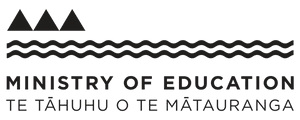In the sixth part of a series sharing the stories of families learning from home during lockdown, Arihia Latham reflects on the life lessons her daughters will take into a new future.
This month we acknowledged te wā o Matariki me Pūanga, the Māori new year. It’s been a year huh. I have heard people lament that they’d like to reload 2020, and if we observe the maramataka, this is our chance. When Matariki and Pūanga stars rise in our skies it’s a time to remember those we have lost, and to grieve. It’s also a time to reflect on what has been, to look ahead at the coming warm months and alter our course.
This is something we’ve not often had a chance to do over the last six months. Most whānau have been superheroes maintaining work obligations and education for their tamariki as they run the gauntlet of the longest school term in history. As the stars became visible in our skies and the school holidays came to a close, there was a chance to reflect on what we’ve been through as a family, a community and country. We can choose to slow down again, reflect on what the slowness gifts us and what seeds we want to sow for the next season.
My children both loved and hated lockdown. The opportunity to reflect, to notice and decide what felt right each day was our gold. My three year old loved having her older siblings home to play and learn with. The older two, aged 15 and 17, struggled more with having to learn online. Most of all they missed the opportunity to bounce ideas off their peers and connect in real life with their friends.
The joy in my 15 year old daughter returning to her year eleven studies at school was palpable. Learning Shakespeare is nowhere near as fun if you can’t practise lines together while prancing around in costumes. My daughter enjoys mathematics. But as a kinesthetic learner she missed being able to feel out the maths problems in a classroom with her community of students and her teacher. Speaking te reo Māori through Zoom sessions was also harder for her as she tried to write assessments and practise kōrero without her manu tīoriori of a kaiako beside her.
I felt totally useless supporting her online learning as I juggled my own work and the preschooler. Mostly I tried to offer her the perspective of my working life, but also just life. Our solution was less outcomes-focused and more mindful. Watching what each day brought us and how we could sink into that as much as possible.
I know my older daughter feels she’ll never get the time back, that her chance at NCEA is dashed by the way this year has played out. I can only join her amazing teachers in assuring her that she’ll be OK. The learning she did in class through lockdown was important, but so was the learning she did outside. The observations made quietly with her young sister in the sandpit or picking apples and peaches from our trees – and actually having time to make crumble and chutney from scratch – are life lessons we yearn for in the working world. We discovered time is the real nemesis of deep learning, connecting and letting those moments of profound understanding arise.
As we stepped back into ‘normal life’, we grieved for Papatūānuku and Ranginui and the restoration they were promised through the rāhui of the Covid-19 lockdown. Kākā, rūrū and pīwakawaka became urban dwellers and the quiet, calm feeling in our neighbourhood was miraculous. The learning my children undertook in their taiao, our local environment, was perhaps the most rewarding learning for us through that time. Science took on a life of its own in our whare over lockdown. We germinated seeds, fed sourdough starters and filmed videos that explained our precious natural resources. It feels a distant memory now in the fug of cars chugging down our street, and aeroplanes again growling overhead every hour.
I thought about how to frame this time for my children, and it reminded me of the way the gourds we harvested in autumn were just drying out enough to start to hear the seeds rattle their earthy music within. Hine-pū-te-hue is the atua of peace and of this beautiful music of gourds. We talked about her as a young woman, figuring out the world, containing the seeds within her to hold so much, and how finding peace in herself and her family were woven together with her understanding of her future. This time of the rāhui was like that careful drying time, giving us the chance to ready ourselves to step back out and make peace, make our music in the world.
I can only hope that those who lost whānau during the rāhui and were not able to mourn at tangi and funerals get their chance during this time of Matariki. This is their time. We can see them in the stars bright and beguiling, sparkling at dawn, offering us a peaceful deep breath before the seeds of warmer days greet us.
Our family didn’t thrive as much as I would have liked through this time due to lots of difficulties. But I know we are still so lucky to have had the rāhui that we did. Our environment thrived and if there is anything I can hope for it’s that we take some of that ability to slow down and listen, to travel less and be in nature more. From those experiences came a very different and long lasting lesson: that manaaki and tiaki of ourselves and our taiao is vitally connected. When my three year old sat up straight from sleep last week and exclaimed “The sun is a star!” I knew that there is profound, deep and wonderful learning happening in my children, even in their dreams.


